Jeep Avenger vs Vauxhall Astra – Which car suits you better?
Compare performance, boot capacity, efficiency and price at a glance.
Find out which car is the better choice for you – Jeep Avenger or Vauxhall Astra?
Costs and Efficiency:
When it comes to price and running costs, the biggest differences usually appear. This is often where you see which car fits your budget better in the long run.
Jeep Avenger has a somewhat advantage in terms of price – it starts at 21900 £, while the Vauxhall Astra costs 25200 £. That’s a price difference of around 3249 £.
Fuel consumption also shows a difference: Vauxhall Astra manages with 2.20 L and is therefore significantly more efficient than the Jeep Avenger with 4.90 L. The difference is about 2.70 L per 100 km.
In terms of energy consumption, the advantage goes to the Vauxhall Astra: with 15.40 kWh per 100 km, it’s slight more efficient than the Jeep Avenger with 15.50 kWh. That’s a difference of about 0.10 kWh.
As for range, the Vauxhall Astra performs slight better – achieving up to 419 km, about 19 km more than the Jeep Avenger.
Engine and Performance:
Power, torque and acceleration are the classic benchmarks for car enthusiasts – and here, some clear differences start to show.
When it comes to engine power, the Vauxhall Astra has a distinct edge – offering 225 HP compared to 156 HP. That’s roughly 69 HP more horsepower.
In acceleration from 0 to 100 km/h, the Vauxhall Astra is to a small extent quicker – completing the sprint in 7.50 s, while the Jeep Avenger takes 9 s. That’s about 1.50 s faster.
In terms of top speed, the Vauxhall Astra performs to a small extent better – reaching 235 km/h, while the Jeep Avenger tops out at 194 km/h. The difference is around 41 km/h.
There’s also a difference in torque: Vauxhall Astra pulls distinct stronger with 360 Nm compared to 260 Nm. That’s about 100 Nm difference.
Space and Everyday Use:
Beyond pure performance, interior space and usability matter most in daily life. This is where you see which car is more practical and versatile.
Both vehicles offer seating for 5 people.
In curb weight, Jeep Avenger is to a small extent lighter – 1180 kg compared to 1341 kg. The difference is around 161 kg.
In terms of boot space, the Vauxhall Astra offers slight more room – 422 L compared to 380 L. That’s a difference of about 42 L.
In maximum load capacity, the Vauxhall Astra performs hardly perceptible better – up to 1339 L, which is about 62 L more than the Jeep Avenger.
When it comes to payload, Vauxhall Astra barely noticeable takes the win – 509 kg compared to 502 kg. That’s a difference of about 7 kg.
Who wins the race?
The Vauxhall Astra proves to be outperforms in nearly all aspects and therefore becomes our DriveDuel Champion!
Vauxhall Astra is the better all-rounder in this comparison.
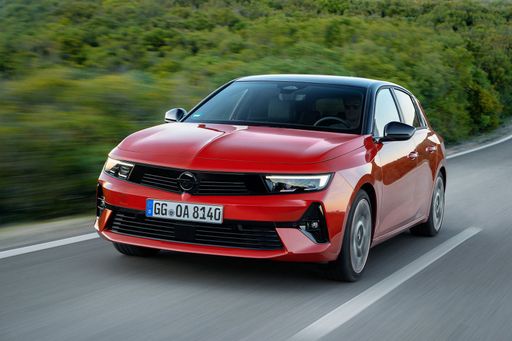
Vauxhall Astra
Jeep Avenger
The Jeep Avenger is a compact SUV that brings a blend of rugged design and modern technology, making it ideal for both urban and off-road adventures. Its robust build and distinctive styling capture Jeep's iconic spirit while offering a comfortable and refined driving experience. With advanced safety features and a versatile interior, the Avenger caters to a wide range of drivers looking for practicality and excitement.
details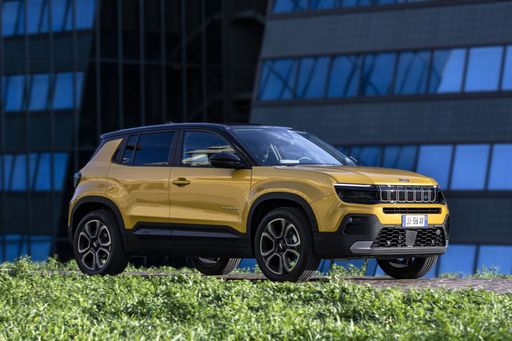 @ Stellantis
@ Stellantis
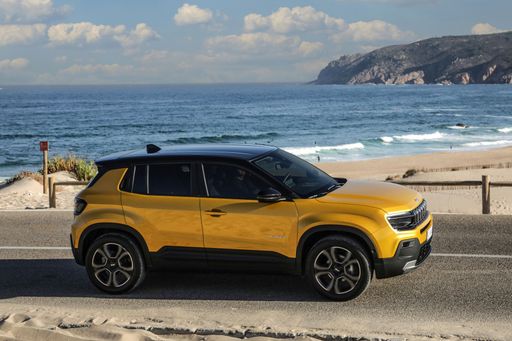 @ Stellantis
@ Stellantis
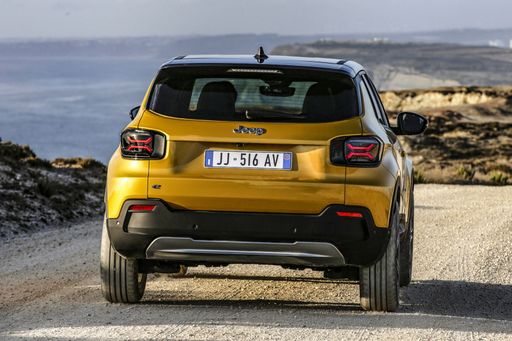 @ Stellantis
@ Stellantis
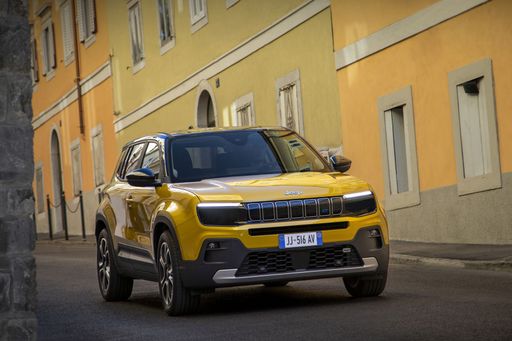 @ Stellantis
@ Stellantis
 @ Stellantis
@ Stellantis
Vauxhall Astra
The Opel Astra exudes a sleek and modern design, making it a standout choice in the compact car segment. Its interior is thoughtfully crafted, providing both comfort and cutting-edge technology for an enhanced driving experience. The vehicle is also celebrated for its efficient performance, adeptly balancing power with fuel economy to suit urban and long-distance journeys alike.
details @ www.media.stellantis.com
@ www.media.stellantis.com
 @ www.media.stellantis.com
@ www.media.stellantis.com
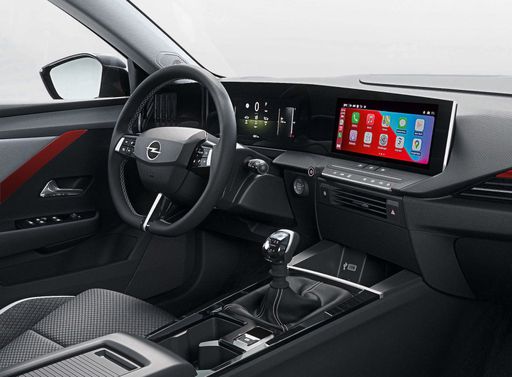 @ www.media.stellantis.com
@ www.media.stellantis.com

|

|
|
|
|
Costs and Consumption |
|
|---|---|
|
Price
21900 - 36900 £
|
Price
25200 - 40500 £
|
|
Consumption L/100km
4.9 - 5.7 L
|
Consumption L/100km
2.2 - 6 L
|
|
Consumption kWh/100km
15.50 kWh
|
Consumption kWh/100km
15.40 kWh
|
|
Electric Range
400 km
|
Electric Range
82 - 419 km
|
|
Battery Capacity
51 kWh
|
Battery Capacity
51 kWh
|
|
co2
0 - 129 g/km
|
co2
0 - 135 g/km
|
|
Fuel tank capacity
44 L
|
Fuel tank capacity
42 - 52 L
|
Dimensions and Body |
|
|---|---|
|
Body Type
SUV
|
Body Type
Hatchback
|
|
Seats
5
|
Seats
5
|
|
Doors
5
|
Doors
5
|
|
Curb weight
1180 - 1520 kg
|
Curb weight
1341 - 1736 kg
|
|
Trunk capacity
325 - 380 L
|
Trunk capacity
352 - 422 L
|
|
Length
4084 - 4088 mm
|
Length
4374 mm
|
|
Width
1776 mm
|
Width
1860 mm
|
|
Height
1527 - 1541 mm
|
Height
1432 - 1488 mm
|
|
Max trunk capacity
1218 - 1277 L
|
Max trunk capacity
1268 - 1339 L
|
|
Payload
494 - 502 kg
|
Payload
414 - 509 kg
|
Engine and Performance |
|
|---|---|
|
Engine Type
Electric, Petrol, Petrol MHEV
|
Engine Type
Petrol, Diesel, Electric, Petrol MHEV, Plugin Hybrid
|
|
Transmission
Automatic, Manuel
|
Transmission
Manuel, Automatic
|
|
Transmission Detail
Reduction Gearbox, Manual Gearbox, Dual-Clutch Automatic
|
Transmission Detail
Manual Gearbox, Automatic Gearbox, Reduction Gearbox, Dual-Clutch Automatic
|
|
Drive Type
Front-Wheel Drive, All-Wheel Drive
|
Drive Type
Front-Wheel Drive
|
|
Power HP
100 - 156 HP
|
Power HP
130 - 225 HP
|
|
Acceleration 0-100km/h
9 - 10.6 s
|
Acceleration 0-100km/h
7.5 - 10.6 s
|
|
Max Speed
150 - 194 km/h
|
Max Speed
170 - 235 km/h
|
|
Torque
205 - 260 Nm
|
Torque
230 - 360 Nm
|
|
Number of Cylinders
3
|
Number of Cylinders
3 - 4
|
|
Power kW
74 - 115 kW
|
Power kW
96 - 165 kW
|
|
Engine capacity
1199 cm3
|
Engine capacity
1199 - 1598 cm3
|
General |
|
|---|---|
|
Model Year
2023 - 2025
|
Model Year
2023 - 2025
|
|
CO2 Efficiency Class
A, D, C
|
CO2 Efficiency Class
D, A, C, B
|
|
Brand
Jeep
|
Brand
Vauxhall
|
What drivetrain options does the Jeep Avenger have?
Available configurations include Front-Wheel Drive or All-Wheel Drive.
The prices and data displayed are estimates based on German list prices and may vary by country. This information is not legally binding.
